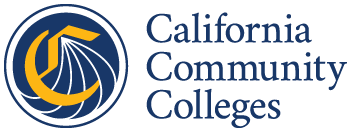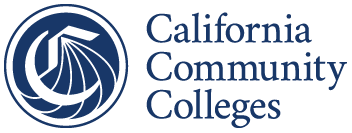October 6, 2024
Dear California Community Colleges Colleagues:
Fall semester is well under way at the California Community Colleges – students fully engaged in classes and activities. The air is filled with excitement, from the rush between classes to the clamor of theater rehearsals, sports practices, gallery showings, service-learning projects, student clubs, internships, apprenticeships…. Certainly, a whirlwind of activity!
It is a great time to be at the California Community Colleges.
Wanted to take a moment to update you on the Credit for Prior Learning (CPL) work that we are energizing across our system. This initiative aims to recognize and validate the skills and abilities that have been gained by diverse learning experiences of our students and future learners, particularly veterans, apprentices, and working adults. By equating skills to college credit, we can accelerate progress toward degrees and certificates that align with industry needs. This effort will require unprecedented cooperation between our colleges, intersegmental partners, workforce agencies, labor unions, business leaders, industry, and community partners. You have heard me say over and over again that we are in the age of large-scale collaboration and cooperation.
Vision 2030 CPL Workplan
The Board of Governors at their September 2024 meeting established CPL as a Budget and Legislative Priority. The CPL team, led by Sam Lee from the Riverside District, and now my senior advisor, and Associate Vice Chancellor Gina Browne at the Chancellor’s Office, is in the process of developing a Vision 2030 CPL Workplan. We met in early August to launch the development of the workplan. The picture below was snapped during a break between our work sessions.

At this time, the draft workplan identifies three goals:
Vision 2030 CPL Goal 1: Expand CPL Opportunities
Expand CPL Opportunities and Boost Student Success for at least 250,000 Californians, including 220,000 working adults and apprentices, and 30,000 veterans.
Stretch Goal: Serve 500,000, including 450,000 working adults and 50,000 veterans, utilizing 3,000 credit recommendations from 40 workgroups, with 90% reporting improvements across 1,000 success stories.
Vision 2030 CPL Goal 2: Build a Unified Systemwide CPL Platform
The single CPL platform for the California Community College system will be a repository of the mapping of college credits to skills and abilities attained by Californians in the military, industry and other employment sectors. The validation of the skills and abilities will be based on processes established in partnership with the Academic Senate of the California Community Colleges (ASCCC).
The CPL system will be integrated with other systems like the Common Student Data Platform, eTranscripts, and the Career Passport.
Stretch Goal: Achieve full system integration, 100% institutional participation, and 95% stakeholder engagement with best practices.
Vision 2030 CPL Goal 3: Establish Clear CPL Policies, Sustainable Resources, Professional Development, and Best Practices.
Stretch Goal: Eliminate all barriers, secure permanent operational and outcomes-based funding for CPL, and achieve widespread adoption of best practices across all colleges and other education and agency partners.
History
CPL is not new in California. In 2023, in a conversation with Dr. Wolde-ab Issac, Chancellor of Riverside, I committed to bringing this work into the state Chancellor’s office and scaling it systemwide.
Here is a brief history that I captured from the draft workplan that is being developed.
2017: The MAP project began in 2017 at Norco College and was initially funded by a Prop 98 grant sponsored by Assemblymember Sabrina Cervantes and the California Latino Legislative Caucus. MAP originally stood for Military Articulation Platform and was part of a strategy to close an identified equity gap affecting veteran college access in the region.
2018: In 2018, the project was funded for expansion by the Inland Empire regional Dessert Regional Consortium (Strong Workforce Project) to serve the 12 Inland Empire regional community colleges.
2020: In 2020, further expansion saw the creation of the MAP Cohort of 55 colleges, followed soon thereafter by another expansion of the cohort to 76 colleges.
2022: In 2022, the project scope was officially broadened to support all forms of CPL, not just military. The MAP acronym was changed to Mapping Articulated Pathways, which describes the core process facilitated by the MAP platform and the mission of the larger initiative.
2023: Agreement between the Chancellor’s Office and Riverside Community College District to establish this program in the Chancellor’s Office for statewide scalability.
2024: In 2024, the MAP Initiative was incorporated into the organization of the CCC Chancellor's Office to lead the efforts to build CPL capacity at colleges and institutions—to promote economic opportunity for working adults through college to career pathways.
A Word on CPL and AI
Vision 2030 has identified AI and Generative AI as one of the three strategic directions. As it relates to CPL, we are expanding the use of AI, using a closed system approach, to help with detailed, repetitive administrative tasks while ensuring that they are brought back to our faculty and staff to review and make decisions.
Here are some of the AI use cases we are working on:
- Enhancing the upcoming student CPL portal and college-branded CPL landing pages with adaptive screening processes
- Generating common course crosswalks based on CA Common Course Numbering data standards to facilitate articulation adoptions statewide
- Automating the analysis and matching of credit recommendations with college courses
- Identifying sample pathways incorporating CPL in college catalogs
- Creating tailored study guides for transfer-bound students who need credit by exam CPL
- Analyzing workforce trends to prioritize sector-specific CPL development at colleges
- Integrating CPL data into transfer planning tools
- Reviewing relevant laws, policies, and regulations to identify opportunities and challenges
These AI-driven projects aim to streamline the CPL process, improve articulation across institutions, support student success, and align educational offerings with workforce needs, all while maintaining the human-in-the-loop principle and the essential role of faculty and staff expertise in decision-making.
The Work
The team is ready to support all 116 colleges, and they have come up with a basic three-step college implementation process:
- Organize: Add CPL Update to agendas; establish a CPL team; Review training materials
- Collect: Gather sample CPL docs for working adults, apprentices, and military
- Practice: Meet with the MAP team to begin processing CPL
Collaboration with the Academic Senate for California Community Colleges (ASCCC) and local faculty is essential to this work. By developing faculty-driven processes for evaluating, approving, and sharing CPL opportunities, we are building a sustainable systematic approach that supports equitable access to CPL throughout the state and beyond. This collaboration must include our colleagues from Student Affairs including our Admissions and Records staff as well as counselors. We need involvement from every level. Let’s work together to honor lifelong learning and support economic and social mobility for our working learners.
That’s a wrap. Thank you for all that you do.
California Community Colleges – we take care of our students, our communities, and our planet.
Our time is now!
Your chancellor,
Sonya
Find me:
Twitter: @sonyachristian
Instagram: sonya_christian

